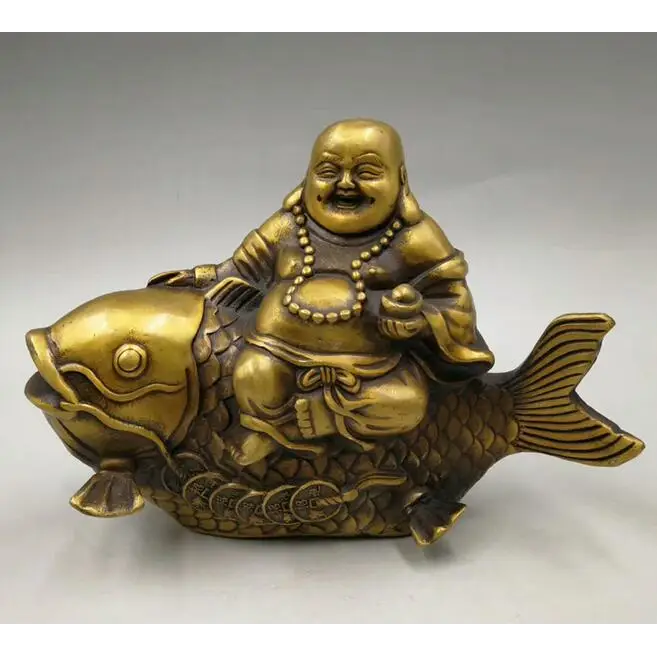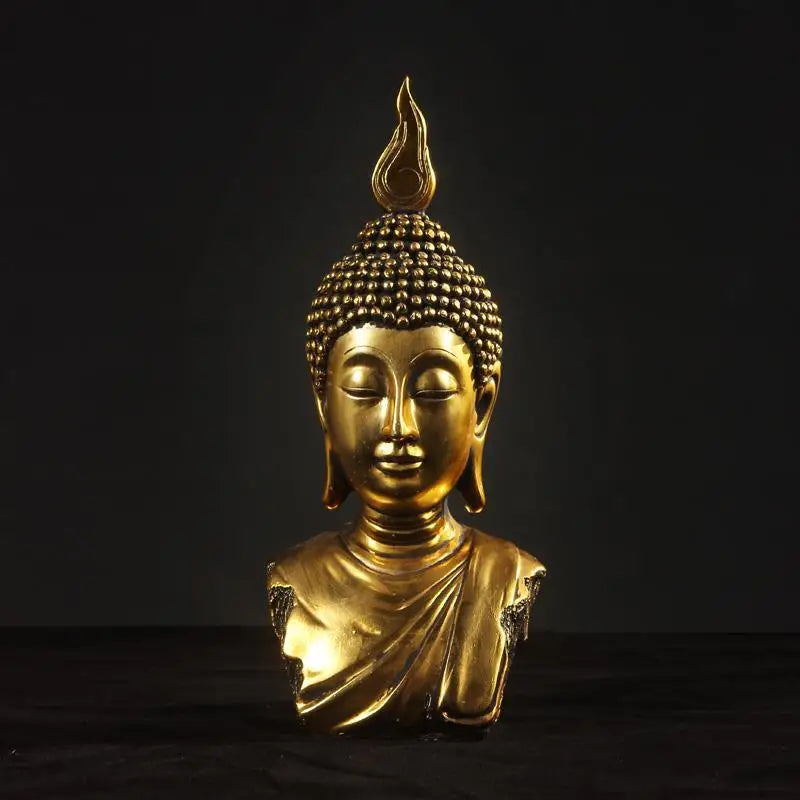Which Buddha to choose?
Which Buddha to choose?
The different types of Buddhas
Choosing a Buddha can seem overwhelming due to the variety of statues and depictions available. Buddhas are often depicted in different positions and with specific gestures that symbolize different qualities. For example, the Buddha sitting in meditation (called Buddha Dhyana Mudra) represents inner peace and stability. On the other hand, the standing Buddha (called Buddha Abhaya Mudra) represents courage and protection. It is important to take into account the message you want to convey with your Buddha before making a choice.
Another important consideration is the appearance of the Buddha. There are a wide variety of styles and representations of Buddha, each with a different meaning. For example, the Thai Buddha is often depicted with a serene expression and a slim body, while the Japanese Buddha is depicted with a more jovial appearance and a more plump body.
Amitabha Buddha
The Amitabha Buddha is known as the "Buddha of Infinite Light" and is associated with compassion and unconditional love. He is often depicted with an alms bowl in his hand, symbolizing his generosity and ability to feed others. It is recommended to choose an Amitabha Buddha statue if you want to cultivate love and compassion in your life.
Another distinctive characteristic of the Amitabha Buddha is its color. It is often depicted with a red hue, symbolizing energy, vitality and passion.
When choosing an Amitabha Buddha statue, make sure to choose a representation that touches you and inspires you. The presence of an Amitabha Buddha in your space can remind you to embody the qualities of compassion and unconditional love in your daily life.
Gautama Buddha
The Gautama Buddha is the historical Buddha who lived more than 2,500 years ago. He is often depicted sitting in meditation with his legs crossed and his hands in the gesture of meditation. This posture symbolizes the search for truth and the quest for enlightenment.
The Gautama Buddha is a powerful representation of wisdom and inner peace. Choosing a Gautama Buddha statue can remind you of the importance of meditation and seeking truth in your own life.
When choosing a Gautama Buddha statue, you can also consider the material used for the sculpture. Bronze Buddha statues are often considered sacred and durable objects, while wooden statues can have a more warm and natural atmosphere.
The meaning of colors
In addition to the posture and style of the Buddha, the color of the statue can also have symbolic meaning. Here are some examples of commonly used colors and their meaning:
- The golden Buddha is associated with wealth, abundance and prosperity.
- The white Buddha represents purity and wisdom.
- The blue Buddha is associated with peace of mind and tranquility.
- The red Buddha symbolizes energy, vitality and passion.
- The green Buddha is associated with healing and spiritual growth.
The golden Buddha
The golden Buddha is one of the most popular and recognizable representations. It is often associated with wealth, abundance and prosperity. Choose a golden Buddha statue if you want to attract the energy of abundance into your life and cultivate an attitude of gratitude.
The color gold is also associated with wisdom and clarity of mind. A golden Buddha statue can therefore also help you develop your inner wisdom and clear vision.
Be sure to place your golden Buddha statue in a special place where you can pay homage to it regularly and connect to its energy.
The White Buddha
The white Buddha represents purity and wisdom. It is often used as a symbol of calm and tranquility. Choose a white Buddha statue if you want to create a peaceful and serene space in your home or garden.
The color white is also associated with mental clarity and inner peace. The presence of a white Buddha statue can therefore help you free yourself from stress and mental agitation.
Place your white Buddha statue in a place where you can sit and meditate in its presence to fully benefit from its calming energy.
Choose the right Buddha for you
Choosing the right Buddha for you is a personal decision. It is important to consider your intention and what you want to cultivate in your life. Do you want to attract the energy of abundance, wisdom, compassion or tranquility?
Also consider your aesthetic preference and the style that resonates most with you. Browse the different representations and styles of Buddha available and choose the one that inspires you the most.
Remember that the Buddha is a powerful symbol of inner peace and harmony. Whatever Buddha statue you choose, place it in a special place where you can meditate and connect with it regularly.
Putting the teachings of the Buddha into practice
Choosing a Buddha is an important step, but it is equally important to put the teachings of the Buddha into practice in your daily life. Here are some practices you can incorporate:
- Meditation: Take a few minutes each day to sit in silence and connect with your breath. Meditation can help you cultivate presence and peace of mind.
- Compassion: Be kind to yourself and others. Practice kindness and compassion in your daily interactions.
- Mindfulness: Be aware of your thoughts, words and actions. Avoid judging and criticizing, and instead seek to cultivate mindfulness and acceptance.
- Non-attachment: Practice detachment by letting go of expectations and desires. Seek inner satisfaction rather than depending on material possessions.
Meditation
Meditation is a key practice in Buddhism. By engaging in a regular meditation practice, you can cultivate inner peace and clarity of mind. Find a quiet, comfortable place, sit in a lotus or seated position, close your eyes and focus on your breathing. Let the thoughts pass without getting attached to them and come back to your breath.
Meditation can help you reduce stress, improve your concentration and cultivate a state of inner calm. Start with a few minutes a day and gradually increase the length of your meditation sessions.
If you wish, you can also use a Buddha statue as a point of concentration during your meditation. Focus your attention on the statue and use it as a visual reminder of your intentions for peace and serenity.
Compassion
Compassion is an essential aspect of Buddhism. Practice compassion towards yourself and others. Be kind, tolerant, and understanding toward others, and practice kindness toward yourself. When faced with difficult situations, try to put yourself in other people's shoes and see things from their perspective.
Compassion can help you cultivate healthy, harmonious relationships with others, as well as develop unconditional love for yourself. By practicing compassion, you help create a better, more loving world.
Remember that the Buddha is a symbol of compassion. Use your Buddha statue as a reminder of your intentions to cultivate compassion in your daily life.
Conclusion
Choosing a Buddha depends on your intention and what you want to cultivate in your life. Different types of Buddhas have different meanings, the posture and color of the Buddha can also have symbolic meaning. Choose a Buddha statue that inspires you and resonates with you.
Remember that the Buddha is a powerful symbol of inner peace and harmony. Use your Buddha statue as a reminder of your intentions and practice the teachings of the Buddha in your daily life. Meditate, be kind to yourself and others, practice mindfulness and seek inner satisfaction.
By embracing the teachings of Buddha, you can cultivate a life of peace, wisdom and compassion.















































